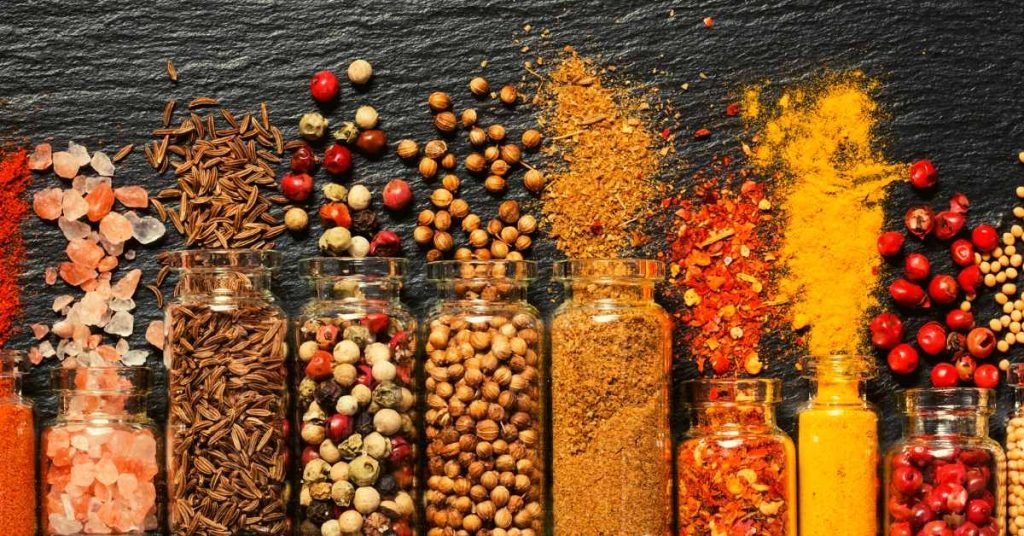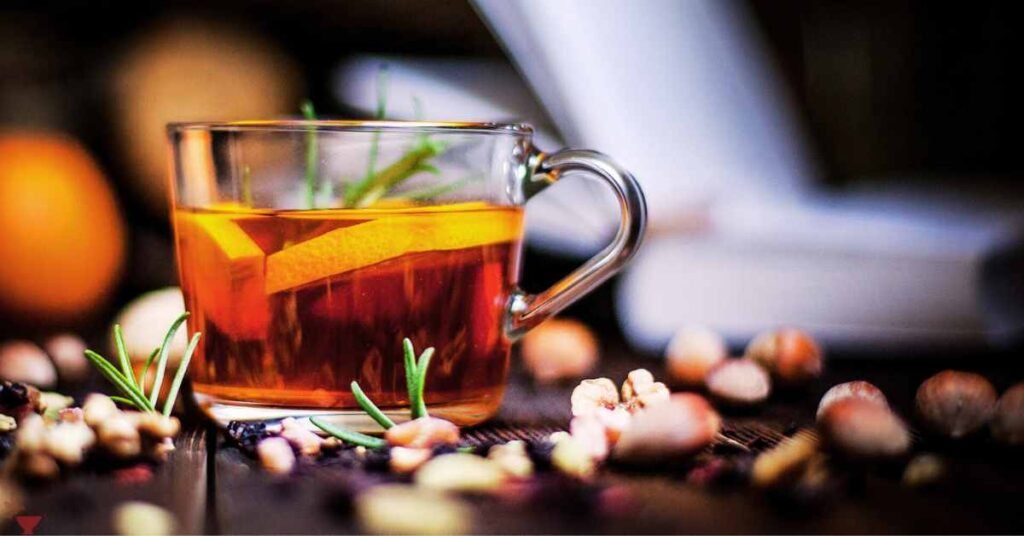Spices have countless beneficial properties for health.
They are widely used in cooking to season and flavor myriad dishes, but you can also take advantage of their medicinal properties by taking them in infusion.
Not surprisingly, it is one of the products that are still consumed today but whose use dates back many centuries.
We have to go back to the first century to find the first documented data on the use of these products by the Greeks and Romans. They already cultivated and knew the properties of spices such as ginger, anise, saffron, and thyme.
Later, the Arabs continued to use their properties (who today are, together with the Orientals, those who consume the most spices).
With the arrival of the commercial routes and the discovery of America in the 15th century, their use spread throughout the world.
Benefits Of Spices Supported By Studies
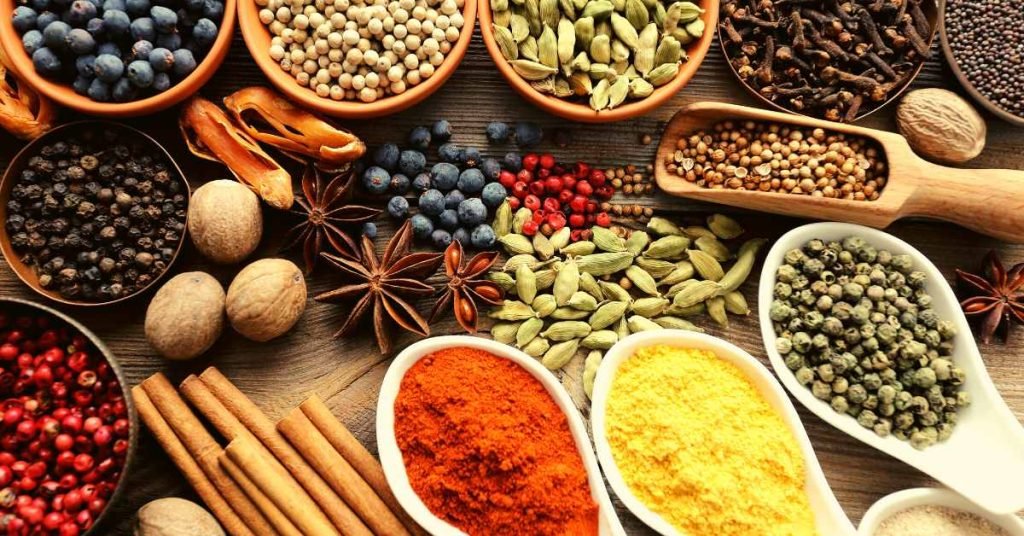
The main benefits of spices are found in polyphenols, a type of natural antioxidant that, according to researchers at the University of California (USA), prevent cell damage, alleviate inflammation and contribute to improving metabolism.
Numerous studies have been carried out throughout the world to certify the benefits of spices.
One of them, carried out by Carmen Wilson Peña from the Faculty of Pharmacy of the Complutense University of Madrid, refers to the most important characteristics of spices such as cinnamon, ginger, and turmeric and the most relevant components of these spices: cinnamaldehyde in the case of cinnamon, gingerol in ginger, and curcumin in turmeric.
This study shows that these spices have a beneficial effect on health, both in the primary prevention of many diseases and in improving existing pathologies.
Another study published in the Journal of Nutrition and conducted by Penn State University (USA) states that regular use of spices such as cinnamon, turmeric, garlic powder, rosemary, or oregano in the diet reduces the accumulation of triglycerides in the blood by 30%.
Ginger and Cardamom

Ginger is a thick stem that grows underground and can reach up to one meter in length. It is native to India and China where it has been consumed since ancient times. From there it was imported by the Romans and spread its use throughout Europe.
It is a root widely used because it is a species that promotes the function of the digestive system and can prevent nausea and vomiting. It can also help prevent diseases because it strengthens the immune system.
Taking it in infusion, in addition to the above benefits, also serves to help regulate blood sugar levels, facilitates the absorption of fats (so it is especially beneficial for people who want to control their weight), can reduce the discomfort of menstruation and can help eliminate malignant bacteria from our body.
For its part, cardamom is a species native to Asia, mainly India, but nowadays it is also cultivated in Central America.
Its cultivation requires very specific care because it has to grow with a specific humidity that only occurs in tropical areas.
It is a spice that can help with respiratory problems because it is a powerful expectorant and can help to reduce coughs and asthma problems.
Likewise, cardamom is used to eliminate halitosis and other pathologies that may arise in the mouth. It is also a spice that helps to reduce gas produced in the stomach and other digestive tract pains. It controls blood pressure and fights hypertension.
Turmeric and Cinnamon
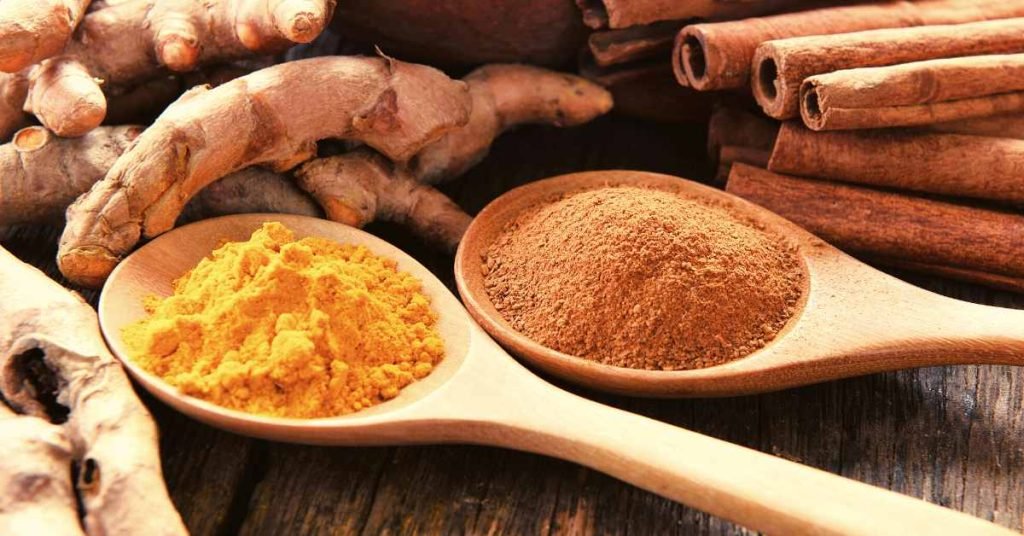
Turmeric infusion is one of the most appreciated for its anti-inflammatory properties. It is a perennial plant that can reach up to one meter in height. It needs to grow in warm and humid environments since it requires large amounts of water to develop.
Like many other spices, it is cultivated mainly in India.
Among its properties, it can help reduce the symptoms of arthritis, improve the symptoms of depression, and contribute to reducing the effects of other diseases such as cancer, Parkinson’s, and cardiovascular or kidney disorders.
Cinnamon is obtained from the inner part of the cinnamon tree. It is grown in tropical areas and the tree can reach 8 meters in height.
It is harvested during the rainy season because the humidity makes it easier to separate the bark from the tree to extract it. Once separated from the tree, it is rolled into a tube known as a cinnamon stick.
From it, the powder is extracted to obtain the cinnamon infusion that fights bad breath and can help control blood glucose levels as it increases sensitivity to insulin, essential to control diabetes.
It can also prevent other ailments such as aerophagia, flatulence, heartburn, or difficulty digestion.
It also has antibacterial, expectorant, and anti-inflammatory virtues that favor the respiratory system and prevents bronchitis and colds.
Another of the properties contained in the components of cinnamon is the improvement of the circulatory system, especially poor circulation in hands and feet.
Anise and Vanilla
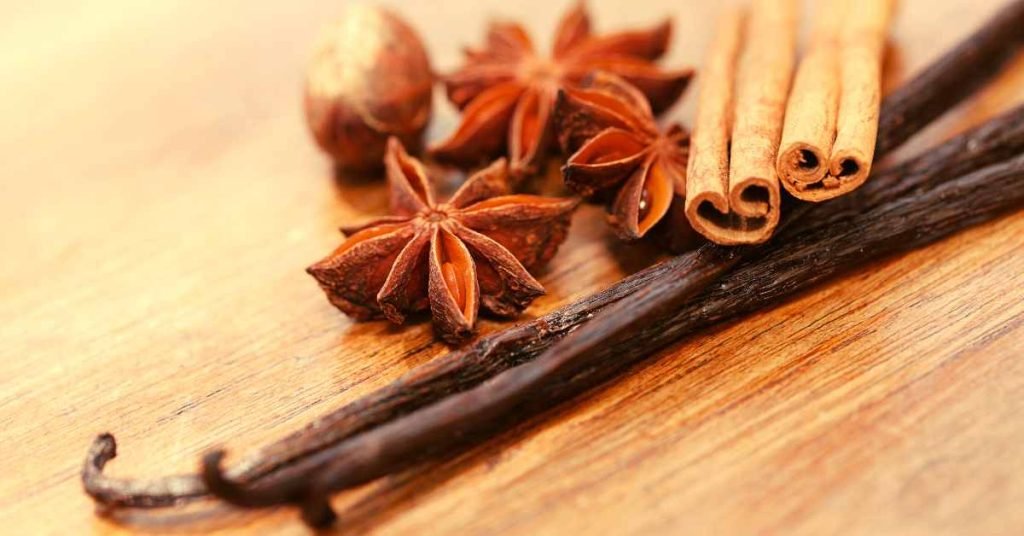
Anise infusions have been used for hundreds of years for their properties that help strengthen the immune system and can slow the spread of viruses in the body.
Anise comes from the Pimpinella anisum plant and grows in Eastern European countries and in Asian areas, mainly India.
Aniseed is beneficial for relieving muscular and respiratory problems as well as for treating digestive ailments. It also has a great antioxidant effect due to the concentrations of vitamins A and C it contains.
A study conducted by the Faculty of Biochemistry of Devi Ahilya (India) carried out on rodents concluded that star anise reduced the tumor load in these animals, so its anticarcinogenic properties should be taken into account, but this evidence has yet to be demonstrated in humans. On the other hand, it is a spice that can help to fall asleep.
For its part, vanilla is another of the great spices that offer natural virtues. It is the edible fruit extracted from a tropical orchid called Vanilla planifolia, a highly valued species.
Its high phenol content gives this plant the intensely sweet smell that characterizes it. Mexico, Tahiti, Indonesia, and Cuba are the main producers of this spice.
Its benefits in the digestive tract stand out: it helps to digest food better, can be very useful to treat diarrhea caused by diseases such as gastritis or gastroenteritis, relieves heartburn, the heaviness caused by some foods, fights gas, flatulence, swelling of the abdomen, can relieve muscle aches or headaches and can even help improve mood.
Vanilla can also be a good antipyretic as it helps to lower the body temperature caused by fever.
Antibacterial properties are also attributed to vanilla because it can fight fungi and other organisms that cause infections. And finally, it can help relieve stress and help you fall asleep.
MEDICAL DISCLAIMER
Itsnevernotteatime.com cannot and does not contain medical/health advice. The medical/health information is provided for general and educational purposes only and is not a substitute for professional advice.
